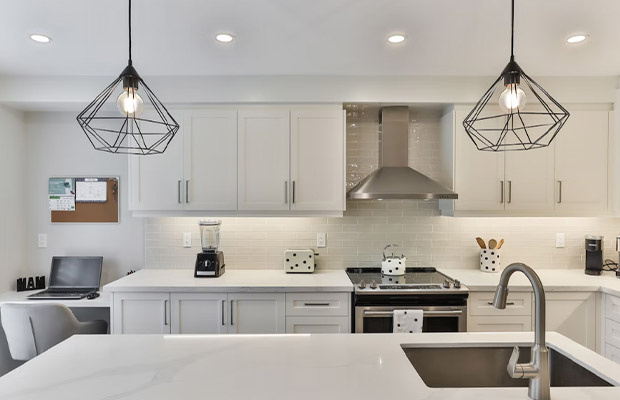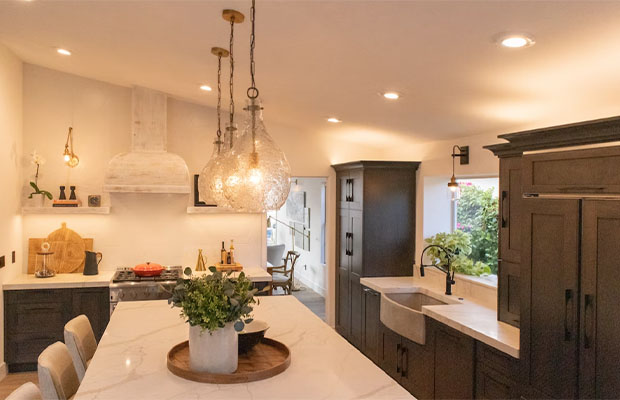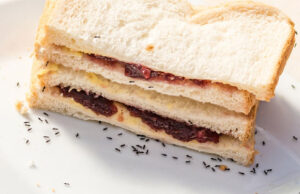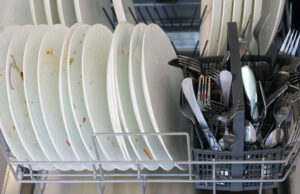Kitchens are one of the most important areas in your home. Let’s see what color light is best for kitchen.
Here, a lot of work is being done, including meal preparation, hosting visitors, homework completion, list-making, and other tasks.
For the kitchen, a warm white bulb is suggested. These lights, which have a yellowish-white hue, are ideal for this area.
Your room must be light, and the kitchen lights’ color should complement your mood. Learn more about kitchen lighting by reading on.
Table of Contents
How Light Color Affects the Kitchen
The kitchen’s design and usability are significantly influenced by the color choice of light. Light hues range from white to yellow. A kitchen’s color may be severely altered by excessively yellow lighting. On the other hand, if the light is too white, the kitchen will look sterile, icy, and uninviting.
But it’s also crucial to select lighting that will offer sufficient visibility for cooking in terms of functionality. So, as already mentioned, the best course of action is to select lighting that is somewhere in the middle of the lighting spectrum, lighting that is both white (for increased visibility) and warm (for a cozy, homey feel). Choosing kitchen lighting that is close to the lighting spectrum’s extremes is therefore not a good idea.
Read More: How To Lighten Up A Kitchen With Cherry Cabinets?
What Color Light is Best for Kitchen?
Which should I choose between cool white and daylight for my kitchen? The best light colors for the kitchen are cool and bright white. Cooking is made easier by the pleasant brightness and energizing feeling they impart.
The natural lighting in the kitchen is ideal for preparing food and reading recipes. Kitchens are adaptable, though, so the color temperature might change. The best strategy is to choose based on your decor and any additional lights in the space. A 3000K white that is unfailingly “neutral” will always look stunning. Color temperature range: 2700-4000K.
If you frequently use pendants and accent lights, they should be a warmer color with a 3000–4000Kalvin temperature to create a comfortable kitchen atmosphere.
The more lumens a bulb has, the brighter it is; this is how brightness is measured. A rough estimate of 7,000–8,000 lumens is needed for kitchen lighting.
Three Categories of Kitchen Lighting
You can use one of three main types of lighting in your kitchen. These include accent lighting, which draws attention to a particular area in the room, task lighting, which illuminates a particular work area, and ambient or general lighting, which provides the room’s basic light.
Ambient Lighting
The ideal lighting for cooking is ambient. The light is adequately distributed to your kitchen space to give it great illumination. It is not difficult to work under the light because it is uniformly distributed throughout the space.

Installing recessed lighting in your kitchen is a good way to give the room enough light. In addition to recessed lighting, you can also use flush mounts, chandeliers, and pendant lights.
Task Lighting
Task lighting is used if you need light for a specific activity. In the particular area where you do the majority of your work, it will provide excellent lighting. The area above your workspace should have task lighting, especially when using knives.
Task lighting can also be provided by under-cabinet lighting. If you use your countertop for activities, this is ideal. No shadows will be cast under this kind of lighting. Additionally, it offers a lovely architectural feature that draws attention to the contour and shape of your kitchen.
With task lighting, you can illuminate your cabinets and work spaces effectively. This can help you prepare your meals safely, read recipes, and locate ingredients on your shelf easily. The light beam from task lights is typically direct.
Accent Lighting
Accent lighting is the best choice if you want to draw attention to a specific object in the room. Visual interest is provided by these lights. Accent lighting can draw people’s attention to specific areas of your kitchen that you want to highlight. Accent lighting above your cabinet area will give the space a warm appearance, and it will even make your ceiling appear taller.
Best Color Temperature Options for Kitchen
Daylight – 5000K
This light is white, almost bluish. Instead of using them throughout your kitchen, you can use this type of lighting as task lighting. It is a great task lighting in places where you do your food preparation or read recipes. Reading has actually been shown to be simpler under these types of bulbs.
For use in your kitchen work areas, these LED bulbs are ideal. It is ideal to have bright, natural lighting when you are cooking or the kids are doing their homework.
Cool White – 4100K
A cool white light is a good light workhorse for your kitchen. Your area will be well-lit throughout. The light is a cool tone or bright white in color. You can work beneath it because it is bright and cool.
Setting the Mood in the Kitchen
Color temperature has an impact on people’s moods. Your body can release the melatonin hormone in low color temperature lighting. This causes you to relax and become sleepy. The serotonin hormone is released by your body when your lights have a high color temperature, which increases your energy level.
While the best lighting for your kitchen are lights with high color temperature, you can also use lights with low color temperature to set its mood. It is good to layer decorative bulbs with warm amber glow in a space that already has cool whites and daylights. Installing a dimmer switch, however, will give you more control over how bright your kitchen lights are.
Alternately, you could decide to use LEDs that can change color to regulate the temperature. Warmer lighting will be available up to 2200K when the lights are dimmed. It can still have a place in your kitchen even if the lamp you have emits a soft yellow light that makes it impossible for you to see. It is advantageous to have that light on if you are not using your kitchen as you would normally.
But before you start cooking, switch it off and turn on the lights up there. You can safely and effectively prepare your meals by turning on the cooler lights.
Important Factors to Help You Decide
Our ability to choose the appropriate color temperature is aided by a few crucial factors. Knowing about things like the color rendering index, lumens, and different lighting fixture styles can be helpful when making decisions.
CRI (Color Rendering Index)
When deciding between color temperatures, CRI, or the Color Rendering Index, may be more helpful.
Why? The CRI, which has a maximum score of 100, is a measurement of how colors appear when illuminated by a light source in comparison to natural sunlight.
You can distinguish between different colors when the CRI is higher (90+).
Bottom line: It brings out the colors of nearby objects that are illuminated by the light source.
For instance, when using a high-quality light fixture and a high CRI rating, the yellow banana and the red apple in a grocery store appear more yellow and red.
*Pro-tipAn LED light’s appearance can change even if it has the same color temperature as another light. Lumens (a higher lumen number indicates a more powerful light) and CRI (a color rendering index of 90+ is best in overall quality) are additional important considerations.
Lumens
The overall light output of the fixture is measured in lumens. The wattage number cannot compare to this in many ways.
You should search for a lumen range of 800–3,000 for the average kitchen.
For accent lighting or LED under cabinet lighting, the lumen range may be 100-500.
Choosing the Right Lumens for a Kitchen
A few variables affect getting the proper lumen value.
- Lumen output can vary depending on the type of light fixture; overhead ceiling lights may produce more lumens than table lamps. accent lighting that may not need as much output.
- In comparison to a larger kitchen, you might not need as many lumens if your kitchen is smaller.
- Light placement is important. Greater lumen numbers are preferred as distance increases.
- In comparison to a bright white kitchen that receives natural light, darker cabinets or décor may require a higher lumen number.
Use Color Selectable Light Fixtures
You’re in luck if you’re having trouble deciding on a color temperature (CCT). Today, a lot of manufacturers of lighting fixtures offer the option to choose the color that best suits your needs.
You can easily switch from warm white to cool white using a switch that is accessible from the fixture’s back.
You can now precisely adjust your preferred color temperature range and test what works in your environment.
Conclusion on What Color Light is Best for Kitchen
Choosing the proper color temperature for your kitchen lighting can significantly alter how you use the room.
Making a lighting plan for your kitchen requires first considering the activities you will perform there, including cooking, entertaining, and other tasks. Considering all the factors, the best color temperature bulbs for your kitchen are 4100K LED bulbs.
The general lighting in your kitchen will benefit from this. You experience both calm and vigor from the color that is emitted. You will have excellent visibility throughout the kitchen if cool white lights are installed. You might want to mix in a few 5000K LED bulbs for kitchen task lighting. Install under-cabinet lighting to specifically illuminate the area you want to use in your kitchen for knife work.
We hope this article could assist you in making the best choice for your home’s kitchen lighting. For more kitchen lighting, read our post on How To Pair Kitchen And Dining Lights.


